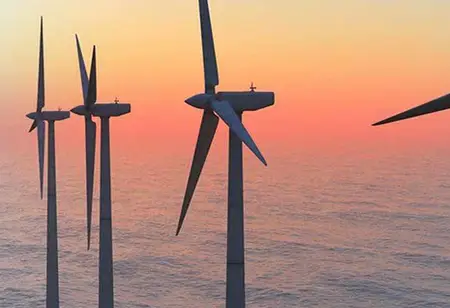Thank you for Subscribing to Energy Business Review Weekly Brief
Future Energy Mix: Why Bioenergy Will Play a Huge Role
Bioenergy will offer a large degree of supply and demand balancing.

By
Energy Business Review | Thursday, September 08, 2022
Stay ahead of the industry with exclusive feature stories on the top companies, expert insights and the latest news delivered straight to your inbox. Subscribe today.
Bioenergy can offer storage, carbon capture, and frequency stability and be a renewable energy source. Because of its unique characteristics, it will be a crucial component of the future decarbonized energy mix.
Fremont, CA: Bioenergy will offer a large degree of supply and demand balancing. Wind and solar power are inconsistent. Still, bioenergy can supply power when it is needed. Huge amounts of energy can be stored for a low cost in simple wood piles, permitting seasonal differences in energy supply and demand to be conformed.
Another significant feature of bioenergy is that it enables us to absorb carbon from the atmosphere cheaply and efficiently by planting trees and then recovering that carbon when biomass is employed to generate electricity in the coming decades. In a deconcentrated renewables-intensive system, biomass can also provide the inertia required to maintain frequency stability, which is a serious problem.
Dispatchable bioenergy
Electricity demand can be encountered by turning on and off dispatchable generation. During high demand and/or low renewable energy periods, some dispatchable generation capacity will almost certainly be necessary for the grid. This will almost certainly necessitate dispatchable electricity derived from chemically stored energy.
Daily supply and demand discrepancies are expected to be rectified through smart charging, demand-side response devices, and grid energy storage using batteries and pumped-storage hydroelectricity. These methods, in contrast, are unlikely to withstand a protracted period of low wind during a cold, gloomy winter. There are two main substitutes here — bioenergy and hydrogen.
Check Out This : Bioenergy Solutions Companies
Frequency stability
The rotational speed of the generators determines the frequency of the AC supply. A current is enticed as each pole of a generator's rotor bar crosses the stator windings, reversing when the opposing pole passes. The magnetic field decreases as electrical demand falls, causing the generator to accelerate and the AC frequency to rise. The AC frequency & phase must be synchronized across the national grid to ensure that devices function properly. Biomass has the inertia necessary to keep the grid's frequency stable.
Negative emissions without capturing carbon
Trees engross carbon from the atmosphere as they develop, but breakdown and fires eventually release it back into the atmosphere. Conventionally, mature forests were assumed to reach a point when they released as much carbon as they captured.
`Even ancient primary forests, now recognized, continue to capture more carbon than they release, with some carbon settling in the soil. Biomass can support land regeneration and afforestation, which the Intergovernmental Panel on Climate Change (IPCC) estimates could absorb between 0.5 and 3.6 Gt of CO2 per year.






